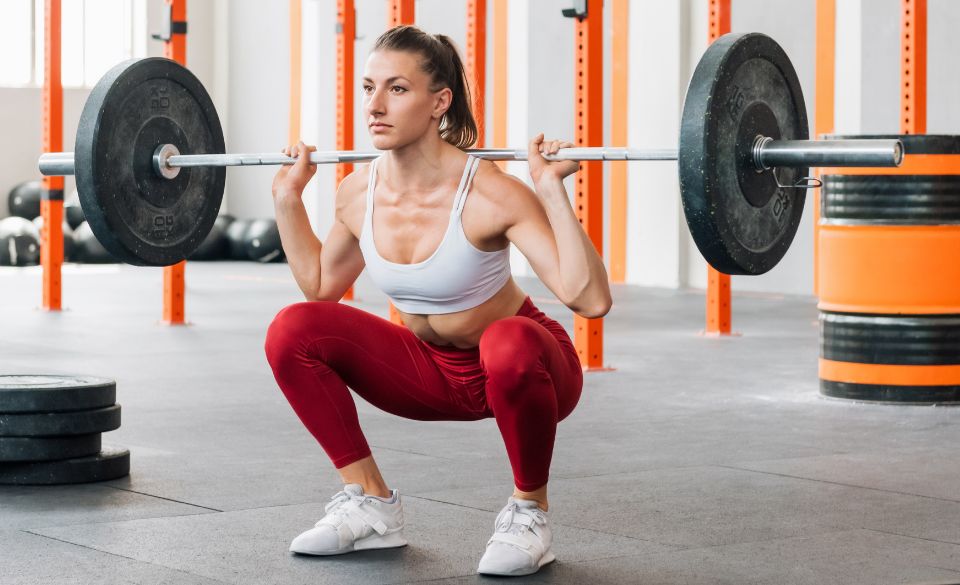
Squatting with Knee Pain: How to Overcome the Challenge
Page Contents
Are you an avid gym-goer or a fitness enthusiast who loves incorporating squats into your workout routine? Squats are an excellent exercise for building strength in your lower body, but what happens when knee pain starts to hinder your progress? Don’t worry; you’re not alone! Many individuals experience knee discomfort while squatting, but that doesn’t mean you have to give up on this fantastic exercise. In this article, we will explore some effective strategies to help you continue squatting with knee pain.
Understanding Knee Pain and Squatting
Before we delve into solutions, let’s understand why knee pain may arise during squats. Squatting is a compound movement that places stress on various muscles and joints, including the knees. Knee pain can stem from factors such as poor form, muscular imbalances, or underlying joint issues. It’s crucial to identify the cause of your knee pain to address it effectively.
Several studies have examined the relationship between knee pain and squatting. One study published in the Journal of Orthopaedic & Sports Physical Therapy found that individuals with knee pain had decreased strength in their hip muscles, leading to increased stress on the knees during squatting. Another study conducted at the University of North Carolina suggested that improper squat technique, such as excessive forward knee movement or inadequate hip muscle activation, could contribute to knee pain.
Tips for Squatting with Knee Pain
1. Work on Your Form: Proper squat form is essential to minimize stress on your knees. Ensure your knees stay in line with your toes throughout the movement, and focus on sitting back into your hips. Engage your core, activate your glutes, and maintain a neutral spine. If necessary, seek guidance from a certified trainer or physical therapist to improve your technique.
2. Modify the Depth: If deep squats exacerbate your knee pain, try performing partial squats or box squats. These variations reduce the range of motion and may alleviate some of the stress on your knees. As you build strength and confidence, gradually increase the depth of your squats, but always listen to your body and adjust as needed.
3. Strengthen Supporting Muscles: As mentioned earlier, weak hip muscles can contribute to knee pain during squats. Incorporate exercises that target your glutes, hamstrings, and quadriceps into your workout routine. This will help improve overall lower body strength and stability, reducing the strain on your knees. Some effective exercises include hip thrusts, glute bridges, lunges, and step-ups.
4. Don’t Forget to Warm Up: Prior to squatting, it’s crucial to warm up adequately to prepare your muscles and joints for the exercise. Perform dynamic movements like leg swings, hip circles, and bodyweight squats to increase blood flow and improve mobility. Additionally, consider incorporating foam rolling and stretching exercises to release any tightness in your lower body.
Seeking Professional Guidance
While the strategies mentioned above can be helpful for many individuals, it’s essential to consult with a healthcare professional if you experience persistent or severe knee pain. A qualified physical therapist or orthopedic specialist can assess your condition, identify any underlying issues, and provide personalized recommendations and treatments to help you overcome knee pain during squats. Remember, everyone’s body is unique, and what works for one person may not work for another.
In conclusion, knee pain shouldn’t deter you from reaping the benefits of squats. By understanding the causes of knee pain and implementing the tips mentioned above, you can continue squatting with confidence and without exacerbating your discomfort. Remember to prioritize proper form, gradually increase the depth, strengthen supporting muscles, and warm up adequately.
Alternatives To Squats If You Have Knee Pain
When knee pain hinders your ability to perform squats, it’s important to explore alternative exercises that can target similar muscle groups without exacerbating your discomfort. Here are some effective alternatives to squats that you can incorporate into your workout routine:
Lunges: Lunges are a fantastic exercise for strengthening your legs and glutes while placing less stress on the knees compared to squats. You can perform walking lunges, reverse lunges, or stationary lunges to target different muscle groups. Remember to maintain proper form by keeping your front knee aligned with your ankle and avoiding excessive forward knee movement.
Step-ups: Step-ups are a low-impact exercise that primarily targets the quadriceps, hamstrings, and glutes. Using a step or elevated platform, step onto it with one foot, then bring the opposite leg up. Step back down and repeat on the other side. Adjust the height of the step according to your comfort level and gradually increase the difficulty as you get stronger.
Glute Bridges: Glute bridges primarily target the glutes and hamstrings while placing minimal strain on the knees. Lie on your back with your knees bent and feet flat on the ground. Lift your hips off the ground until your body forms a straight line from your knees to your shoulders. Squeeze your glutes at the top and lower back down. You can make the exercise more challenging by placing a resistance band around your knees or by performing single-leg variations.
Leg Press: The leg press machine is an excellent alternative to squats as it allows you to target the leg muscles while providing support for your back and knees. Adjust the seat and foot placement on the machine according to your comfort. Push the platform away from you by extending your legs, then slowly bend your knees and return to the starting position. Ensure that your knees are properly aligned with your toes throughout the movement.
Wall Sits: Wall sits are a static exercise that targets the quads, hamstrings, and glutes. Stand with your back against a wall and slide down until your knees are at a 90-degree angle. Hold this position for a specified amount of time, gradually increasing the duration as you build strength. Focus on maintaining proper form with your knees aligned over your ankles.
Hip Thrusts: Hip thrusts primarily target the glutes and hamstrings while minimizing stress on the knees. Sit on the ground with your back against a bench or elevated surface. Place a barbell or weight across your hips, then drive through your heels to lift your hips off the ground until your body forms a straight line. Squeeze your glutes at the top, then lower back down.
Remember to start with lighter weights or bodyweight variations for these exercises and gradually increase the intensity as your knee pain allows. It’s important to listen to your body and consult with a healthcare professional if you experience any persistent or worsening knee pain. With these alternative exercises, you can continue to work towards your fitness goals while accommodating your knee pain.
Final Words
Remember, progress takes time, and it’s essential to listen to your body along the way. If you experience any sharp or worsening pain during squats, it’s crucial to modify or temporarily avoid the exercise and consult with a healthcare professional. Patience and consistency are key to overcoming knee pain and building strength in your lower body.
In addition to the tips mentioned earlier, there are a few more strategies you can implement to support your journey of squatting with knee pain:
Manage Your Load: Gradually increase the weight you’re lifting during squats to give your muscles and joints time to adapt. Avoid sudden jumps in weight that may put excessive strain on your knees. Consider using lighter weights or resistance bands to focus on perfecting your form and building stability before progressing to heavier loads.
Incorporate Low-Impact Alternatives: If squatting continues to cause discomfort even after implementing the previous strategies, you can explore low-impact alternatives that still target similar muscle groups. Exercises like leg presses, step-ups, and glute bridges can be effective alternatives that put less stress on the knees while still providing a challenging workout.
Cross-Train: Engaging in a well-rounded exercise routine can help improve overall strength and mobility, which can indirectly benefit your ability to squat. Include activities like swimming, cycling, or yoga to diversify your workouts and promote balanced muscle development. This cross-training approach can reduce the risk of overuse injuries and provide a holistic approach to your fitness journey.
Recovery and Rest: Adequate rest and recovery are crucial for any exercise routine, especially when dealing with knee pain. Ensure you have rest days scheduled in your training program to allow your muscles and joints to repair and rebuild. During this time, focus on activities that promote recovery, such as stretching, foam rolling, and gentle mobility exercises.
Remember that everyone’s journey is unique, and it may take some trial and error to find the strategies that work best for you. Don’t be discouraged by setbacks or temporary modifications. With time, patience, and a proactive approach, you can overcome knee pain and continue squatting with confidence.



